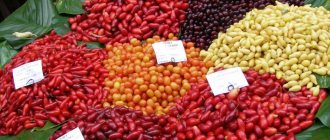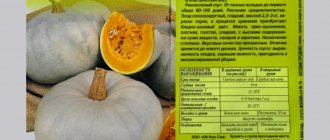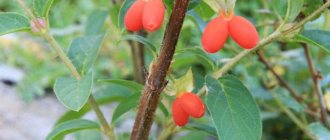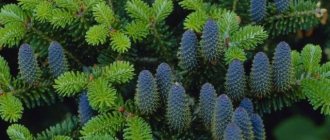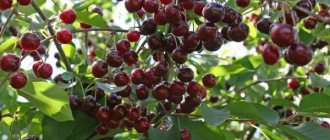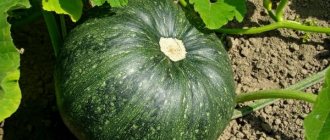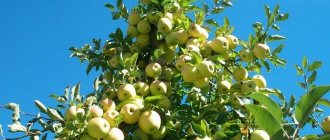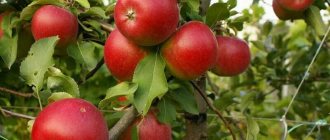Propagation of cotoneaster by cuttings
With this method, it is necessary to cut green cuttings from the center of the stems (which are one year old). It is best to carry out the procedure in the summer, at the end of June. Some of the leaves need to be cut off, about a third. The prepared branches are kept in a solution that stimulates the formation of roots.
For planting, prepare containers filled with a mixture of peat and river sand. The cuttings are placed in the soil at an angle. After which they water well and create greenhouse conditions. To do this, just cover the branches with a jar or part of a plastic bottle. The greenhouse is removed only for a short time for ventilation, and the plants are watered regularly.
Propagating cotoneaster from cuttings is quite simple and easy. The plant does not require special care. Cuttings are planted in open ground only the next year. Because without a strong root system it will be difficult for them to take root in new conditions.
When planting cotoneaster cuttings, you need to take care of drainage in the recesses. When water accumulates at the roots, they are quickly affected by rot. If the soil on the site is too acidic, it can be neutralized by adding lime.
You can go another way of cuttings. To do this, strong, woody branches are cut off in the fall. They are stored in cool conditions until spring. You can keep the cuttings directly in the refrigerator. Then the growing procedure is exactly the same. The branches are treated with a root formation stimulator and planted in prepared holes. By autumn the cuttings will give good roots.
Sowing cotoneaster seeds
This beautiful shrub bears fruit abundantly with red beaded berries in which seeds are hidden. Cotoneaster can be propagated by sowing them, but this is not the most productive method. The seeds germinate very poorly, a significant part does not germinate, and the sprouts themselves slowly grow in size. To get a seedling of sufficient size, you will have to be patient and wait 3-4 years. Propagation of cotoneaster by seeds is more often practiced by breeders engaged in obtaining new plant varieties.
If difficulties do not frighten you and you want to try this method, then you need to follow these tips:
- First, the berries wilt a little. After this, the pulp is much easier to separate from the seeds.
- Cleaned grains are washed to completely remove it.
- Seeds are culled in order to separate out all unpromising specimens at this stage. This is not difficult to do; just fill the planting material with water and leave for a while. Seeds that float on the surface will not sprout and are immediately thrown away.
- The grains need to be stratified. They are kept at a temperature of 30° C for two months, and then it is gradually reduced to -5° C.
- Cotoneaster seeds prepared in this way are sown next autumn at about 3-5 cm in depth.
The seedlings should be cared for until spring, then planted in open ground. Cotoneaster tolerates dark areas well. With sufficient lighting, the decorative features of the plant are fully revealed. Therefore, if possible, it is preferable to plant cotoneaster in an open area.
The hole for planting the plant should be 50x50x50 cm in size. Drainage at the bottom 20 cm high is required so that the roots do not rot. A mixture of peat, humus and sand (all ingredients in 1 volume) and turf (2 volumes) is poured over the drainage. To neutralize the soil reaction, you need to mix 250 g of lime.
When planting, it is important to leave enough space between plants: for small varieties 50 cm is enough, large varieties require about 2 meters.
Breeding methods
Planting and caring for shrubs is easy. Experienced gardeners jokingly call cotoneaster a plant for the lazy. In order for the plant to fully develop, appropriate conditions are initially created for it.
The crop has no special soil preferences. But if there are conditions and opportunities, you can prepare a special soil mixture. Sand, peat and turf soil are mixed in a ratio of 2:1:2, respectively. It is also recommended to add lime to the soil, approximately 300 g per square meter of area.
Growing from seeds
This method is not so common and popular among gardeners. Because you need to spend more time on this and not all of the seed material germinates (literally 50%).
- berries collected from bushes are dried a little, since this will make it easier to separate the pulp from the seeds;
- the grains are washed under running water to remove any remaining pulp;
- the seed is placed in a container of water to separate the empty grains. Good seeds will sink to the bottom, while empty, diseased seeds will float to the surface.
The seed material must be stratified. They are placed in a dark, cold place. Seeds are planted after about a year.
Dividing adult cotoneaster bushes
If the plant has grown too much, it should be divided into several parts. This procedure can be carried out both in spring and in autumn. The bush is dug up, excess soil is removed, inspected and divided into segments with good roots. Each of them is planted separately.
When planting, the root collar should not be buried; it should be flush with the ground.
After planting, the divided parts are watered daily for the first 3-4 weeks. Then irrigation is reduced and carried out no more than twice every 30 days. If there is enough natural precipitation, then the crop is watered only once a month. Water consumption for each bush is 7-8 liters.
Reproduction by layering
This propagation method is suitable for ground cover cotoneaster. Branches located close to the surface of the ground can take root on their own and produce a new bush. To speed up this process, young shoots are simply pressed to the ground with staples, lightly sprinkled with humus. By spring they will have good roots. In April, each specimen can be separated from the mother plant and planted separately.
This is a very productive method with 100% results. After all, while the branches are growing their roots, they are constantly fed by the strong mother bush.
When propagated by layering, seedlings take root well. They are quite strong and have excellent immunity to various diseases.
Regardless of the chosen method of propagating shrubs, do not forget about proper preparation for planting new specimens and good care for them. Young plants are sensitive to frost and require shelter for wintering.
Video about planting cotoneaster
A real decoration of the garden will be the cotoneaster, the propagation of which will allow you to obtain a lot of high-quality planting material from those plants that are already on the site. Almost all types of this shrub are reproduced using traditional methods, that is, through seed germination, cuttings, cuttings and dividing the bush. Depending on the type of plant, different propagation methods are used.
Brilliant cotoneaster: propagation by cuttings
In order not to purchase a lot of shiny cotoneaster seedlings on the market for a hedge, it is recommended to buy 1-2 bushes and plant them on the site. In the second year they will need to be trimmed to give shape and decorativeness. In the process of these activities, twigs will remain that can be forced to take root.
- The cuttings are placed in a liquid with a growth stimulant diluted with water for a day.
- They are then moved into well-fertilized soil at a 45-degree angle. The soil should be loose and light. It is usually made up of two components: peat and sand.
- After “planting”, water it with warm water and cover it with a five-liter plastic bottle with the bottom cut off and the lid facing up. It is removed on hot days. Regular watering of the cuttings is carried out through it.
The best time to collect and root cuttings of brilliant cotoneaster is June. By this month, the branches gain strength and become capable of reproduction. By this time, many roots have formed in the lower part of the cuttings. Next spring, the cuttings can be transplanted to a permanent location. They will take root well and become a wonderful decoration in the garden.
Forming a hedge from brilliant cotoneaster
A hedge of brilliant cotoneaster is often planted by gardeners. A positive feature of some breeds of this plant is their unpretentiousness to harsh climates and decent appearance. In the northern regions of the country, a hedge made of brilliant cotoneaster, which is considered to be the birthplace of Eastern Siberia, is popular.
This plant can be planted as individual bushes, or in groups. The leaves of the brilliant cotoneaster are dark in color, spherical in shape and up to 5 centimeters long. Its decorative qualities are determined by velvety leaves with a silky tint. At the end of spring, the plant begins to bloom and become covered with pink flowers. This phenomenon lasts for about a month, from May to June.
During flowering, the dark leaves of Cotoneaster brilliantly contrast with the pink flowers, which makes it remarkable for garden decoration.
Return to contents
Horizontal and creeping cotoneaster: propagation by layering
Among the cotoneasters there are ground cover species. Their shoots hang 10-20 cm above the edge of the ground or spread along it. Consequently, their branches are close to the edge of the soil, and in the creeping one they come into contact with it. At these points of contact, roots will form over time. This may happen spontaneously.
To obtain a certain number of seedlings of these plants, you can select young shoots and pin them to the ground with metal staples. It is advisable to sprinkle this place with humus on top.
In the spring, use a sharp shovel to cut a branch at the base of an adult bush and carefully dig out the rooting site. The resulting seedling is transferred to the designated place and planted in the usual way.
This method is one of the most effective, since the young seedling feeds from the mother bush and receives moisture and nutrients through the powerful root system of the adult plant. If you do not touch the plant and let it grow on its own, then over time it will weave itself around a significant area of the ground and turn into a living carpet no worse than a grass lawn.
Video: how to grow cotoneaster
Growing a shrub from seeds takes quite a long time. Therefore, this method is used very rarely. It is advisable to use it when breeding a new variety.
Propagation from cuttings
When you prune the bush again, you can leave the strongest branches for growing the bush. Step by step process:
- growth stimulants are diluted in a container with water and twigs are placed in it;
- as soon as the first roots appear on the cuttings, you can transplant the plant into open ground;
- the hole is prepared in advance. A hole is dug with a diameter of 35-40 cm and a depth of 40-45 cm. A drainage layer (pebbles, broken brick, sand) 15-20 cm thick is poured onto the bottom. When planting cotoneaster, one must take into account its ability to grow strongly. Therefore, the distance to the nearest beds or plants should be at least 0.5-1 m;
- It is recommended to prepare a nutritious soil mixture: two parts of garden soil are mixed with humus and sand (take one part at a time). The soil is loosened, poured onto a drainage layer and slightly moistened. The cuttings are placed in a hole and buried in soil (the branches are fixed at an angle of 45˚);
- The soil around the seedling is compacted and watered with warm water.
It is better to prepare cuttings at the beginning of summer. It is recommended to plant cotoneaster in open ground next year.
Reproduction by layering
The horizontal variety of cotoneaster is classified as a ground cover and is easily propagated through layering. Usually the branches of the bush hang very low over the ground surface, and sometimes they simply creep along the ground. Shoots quickly sprout in places of contact with the ground.
If there are no branches that have naturally sprouted, you can tilt the young flexible shoot to the ground and pin it. The place of future rooting is sprinkled with soil and must be watered on dry days. In the spring you can start seedlings. The buried branches are cut off from the bush and transplanted to the desired location.
This method is very popular for several reasons. The shoots will take root naturally and grow strong and healthy. Because they receive enhanced nutrition - from the ground and from the mother bush. If the sprouted branches are not dug up, the cotoneaster grows into a beautiful green carpet. To create a spectacular green space, initially select an open plot of land of good size.
Cotoneaster: propagation by seeds
Cotoneaster is a flowering and fruit-forming shrub. Its berries produce seeds that can germinate. However, their germination rate is very low. This is why there are so few seedlings around the cotoneaster bushes.
If you wish, you can try sowing seeds. But before that, it is necessary to stratify them: leave them for germination. This is a long process, taking a whole year. During this time, the seeds produce sprouts that should turn into real plants.
How to prepare cotoneaster seeds for sowing?
- Collect the berries and lightly dry them so that the pulp can be easily removed.
- Then the soft layer is removed and the seeds are thoroughly washed with water.
- Then they are dipped into a jar of water. Those that have the potential to grow sink to the bottom: they are heavy. Others rise to the top: they are thrown away because they are useless.
- After this, the seeds are placed on annual stratification so that they germinate and are suitable for planting in the ground next year.
This technique is lengthy, requires maximum effort and does not always produce the expected result. To a greater extent, it is suitable for breeding and scientific work, for improving existing varieties and obtaining new varieties.
Cotoneaster: propagation by dividing the bush
Like all ornamental plants, mature, overgrown cotoneaster bushes can be divided into parts. Each such division becomes a viable plant. A group is formed from several seedlings obtained in this way.
This method is the fastest and most effective. If the mother bush is too large, then when it is divided, many individual plants with a ready-made root system are obtained. This simple procedure can be carried out in spring and autumn and immediately place the seedlings where they will grow permanently.
Cotoneaster thickets have recently become indispensable in the organization of hedges, for the design of rock gardens and decorative plantings. It is easy to form plantings of various shapes from cotoneaster and is also easy to replant and propagate - propagation of cotoneaster by cuttings is especially accessible. Moreover, these plants do not have thorns and are not poisonous. And therefore they are not dangerous in plantings. This is what makes it now the most popular in columbariums and plantings, arousing genuine interest among gardeners. But it’s better to tell everything about him in order.
Planting and growing
Propagation by shrub cuttings involves replanting them after they have strengthened and formed viable planting material. After planting, only by the autumn period does the development of a full-fledged root system occur. Despite the fact that the shrub is frost-resistant, after transplanting into open ground in the first winter it requires insulation.
Cotoneaster is not demanding on the composition and fertility of the soil. But to ensure good growth, you should prepare a planting hole filled with substrate. To prepare it, you need to mix turf, peat and coarse sand in a ratio of 2:1:2. It is advisable to first fill the bottom of the hole with a layer of broken brick or gravel, which will act as drainage to remove moisture.
Cotoneaster is quite resistant to various diseases, but in order to prevent their possible occurrence, when choosing a place for permanent growth, you should choose a lighted and well-ventilated one. They should be illuminated by the sun throughout the day, and the groundwater should be low enough. At the same time, cotoneaster, like other ornamental shrubs, should be regularly cleaned of dust and not overfeeding the bushes with fertilizers high in nitrogen (especially in mid-summer).
Description
It belongs to the genus of evergreen, sometimes deciduous, poorly growing shrubs from the Rosaceae family. The name was given to it by a botanist from Switzerland, K. Baugin, who composed it from the words: cotonea - quince, and aster - similar. Cotoneaster is similar to quince and thus deserves its name. The cotoneaster family has more than a hundred varieties and varieties that naturally live in northern Africa and Eurasia. Inexperienced gardeners often confuse the plant with dogwood and then wait in vain for delicious berries from cotoneaster. But, apart from the similarity of names, these perennials have nothing in common. They even belong to different families.
What does cotoneaster look like? This perennial is not only a shrub. Sometimes it is found in the form of a tree that grows very slowly. The plant reaches a height of 3-6 meters. Its roots are fibrous, going down to a depth of about 40 cm.
The branches are outstretched and have a blackish tint to the bark. The leaves on the branches are located opposite, have a simple oval shape, and are slightly shiny. Their color is bright green, and each leaf has 3-5 pairs of veins.
Plant characteristics
Cotoneaster lucidus or cotoneaster lucidus is a shrub that belongs to the Rosaceae family. Despite the similarity of names, it has nothing in common with dogwood. Although its fruits are edible, they are not eaten as they are tasteless. The value of the plant lies in its decorativeness and unpretentiousness.
This shrub is found wild in Siberia, Altai and the Far East, in China. It grows in rocky areas, so it is unpretentious, frost-resistant, and easily adapts to different conditions and any soil. These properties are now actively used for landscaping city parks and squares. The dense foliage of the bush is capable of absorbing dust from roads and purifying the air of gases.
When describing the brilliant cotoneaster, the following features can be noted:
- grows slowly, but reaches a height of 2-3 m;
- forms a very dense crown;
- stems are erect, strongly branched;
- lives up to 50 years;
- the leaves are small, oval, dark green in color, with a shiny glossy surface;
- in autumn the leaves turn purple;
- blooms in May - June, the flowers are small, white-pink, there are so many of them that they often cover all the foliage;
- the fruits are small berries that ripen in September, first bright red, then blue-black.
Cotoneaster is a beautiful, unpretentious plant that is actively used for landscaping.
Planting cotoneasters
Where to plant
Cotoneasters prefer to grow on sunny hills, but can also do well in half-shaded places. There are also types of shrubs that can easily take root in shady areas, for example, shiny. But the horizontal cotoneaster may die in the shade. He needs to be given sunny places in the garden.
When to plant
Cotoneaster of any variety tolerates planting well. It is transplanted to a place of permanent growth in the spring, after the soil has thawed. This can usually be done before the buds begin to open. But it is not necessary to plant cotoneaster in the spring; this can be done in the fall during mass leaf fall, but before the first frost occurs, it must take root at least a little. For example, cotoneaster seedlings should be planted only in autumn. In the fall, black-fruited cotoneaster varieties are also planted.
How to plant
- A rope is stretched along the planting line, and then a narrow (0.5 m) trench (or a series of holes with a diameter of 0.5 m) is dug along it, approximately to a depth of no more than 0.7 meters.
- Before planting bushes, you need to pour a layer of crushed brick or crushed stone about 5 centimeters thick into the trench.
- Then you should make a mixture of peat, sand and turf soil taken equally. You can add a little lime.
- After the seedlings are planted, the soil around the seedlings must be compacted tightly. This is necessary so that voids do not appear in the soil, which can cause the soil to dry out, which can cause the bushes to die.
When planting, you should keep in mind that the neck of the roots should not be lower than the ground level. If the bush droops, it is corrected and raised. After compacting the soil, the soil is mulched with peat.
Planting cotoneaster, including for creating a hedge
In the vast majority of cases, cotoneaster is used as an ornamental crop. Species that form creeping crowns of small height are planted as cover plants on lawns and alpine hills. Species growing in the form of shrubs with a height of a meter or more are used as hedges, separating park alleys and garden areas from roadways, and the tallest bushes are also used to create shady areas.
Planting scheme
The planting technique for all types looks the same, only the planting patterns differ. Thus, the smallest shrubs are planted at a distance of about 50 cm from each other, tall ones - less often. Depending on their purpose, they can be planted at distances of 1.0–2.5 meters: thicker for a hedge, less frequent to give each bush a fancy shape. It is also possible to plant individual bushes far from each other: after all, each specimen can serve as a decoration in itself.
Landing dates
Cotoneaster of all types is planted mainly in the spring, although there are exceptions: Brilliant and Chokeberry are equally well accepted for both spring and autumn planting. Spring planting is carried out after the soil has thawed, but before the seedlings begin to open buds. Autumn - after the leaves have fallen, but long before the onset of serious frosts. Autumn planting is more suitable for gardeners in warm regions; in the center of Russia and to the north it is better to plant in the spring.
However, strict deadlines are set only for seedlings with bare roots. Seedlings with a closed root system (in containers), which have become popular in recent years, are suitable for planting at any time, with the exception of very hot sunny days. Seedlings can be between 2 and 4 years old.
With a closed root system, fairly mature seedlings take root well
Choice of location and predecessor
Cotoneaster grows almost anywhere, and since there is no question of harvesting, the planting site is chosen based on the need to decorate a particular area. You should not pay attention to the lighting, although in the sun the shrub will look somewhat more decorative. There is no need to select the soil composition; the only requirement is that it not be swampy; in any case, drainage material is placed at the bottom of the planting holes.
Cotoneaster practically does not care what crops grew before it, but, according to the rules of crop rotation, it is necessary to avoid planting it directly after related, that is, pink-flowered crops. Of course, a huge number of fruit and berry trees and shrubs are grown in our gardens. This includes apple, pear, cherry, raspberry and strawberry. And among the ornamental shrubs are rose, rose hip, hawthorn, etc. Therefore, if you have a choice, you should not plant cotoneaster after them, but, of course, there is no strict ban on planting.
Preparing the soil and planting hole
Cotoneaster has little demand for soil fertility, but since it is planted for many decades, when digging up a site to remove weed rhizomes, they try to fertilize it a little, and in the case of planting multifloral cotoneaster, they also lime it by adding slaked lime in a dose of 200–300 g/ m2. When digging, a bucket of compost per 1 m2 will be enough. In the case of clay soils, add sand in approximately the same dosage.
If the bushes are planted at a considerable distance from each other, they dig planting holes, but if they are going to grow a hedge, it is more convenient to dig a common trench. The hole should have dimensions of about 50 x 50 x 50 cm, the trench is dug of a similar width and depth. It is important to lay down a 10–15 cm layer of crushed stone, pebbles or gravel, above which fertile soil is poured. The optimal composition is turf soil, river sand and peat (or compost) in a ratio of 2:2:1. 100–150 g of lime in the pit will not interfere with any type of cotoneaster.
Recent Entries
5 working ways to use tar in the garden 7 indoor plants that help you get married even in adulthood Indoor plants that can bloom in trouble
A drainage layer at the bottom of the pit for cotoneaster is required
Planting and transplanting processes
Planting cotoneaster in a pre-prepared hole is not difficult. Having removed the required amount of soil mixture from the hole, the seedling is installed so that the root collar is 2–3 cm above ground level (with subsequent compaction of the soil, it should drop exactly to the ground). This is an important point: significant deepening of the root collar can lead to the death of the plant. Otherwise, everything is as usual: the seedling is well watered, the soil is mulched with peat chips or any other material.
The good thing about cotoneaster is that it can be replanted at any age, as long as it is physically possible (the bush is not too large, the root system can be removed without severe damage). Transplantation is carried out in spring or autumn, but young bushes, if they can be removed with a lump of earth, can be replanted even in summer. When digging up a bush, it is important to preserve the roots as much as possible, and in a new place plant it at the same depth and water it well. It is possible that in the first couple of years the transplanted bush will bloom significantly less.
Video: planting cotoneaster along the fence
Top dressing
Perennials, especially decorative varieties, are not very demanding on soil. Mature shrubs do not need feeding and feel good without it. But they still take well to feeding with diluted manure or bird droppings. Manure is diluted for this purpose in a ratio of one to five, and litter - one to ten. Fertilizer is applied to the soil immediately before planting. And besides, it is advisable to add it during the period of active plant growth. Such fertilizing helps bacteria develop and increases soil fertility. Feeding in the summer is very useful for plants, especially for adult plants. At the end of summer, you need to stop feeding cotoneasters. This is done so that the shoots stop growing and their bark has time to become lignified.
With the onset of warmth, it is advisable to feed the cotoneaster with nitrogen fertilizer, for example, urea diluted in a bucket of water in the amount of 25 g. Before flowering, the plants are fertilized with the following composition: 15 g of potassium and 60 g of superphosphate. This composition is sprinkled on the ground around the bush, over an area of approximately one meter square.
Caring for cotoneaster after planting
The brilliant cotoneaster has gained great popularity due to its lush crown and unique decorative characteristics. It grows well in sunlit areas, but can take root and bear fruit in shaded areas. The plant requires virtually no care, soil fertility and watering, so its propagation and cultivation does not cause any trouble.
Ornamental shrubs of any variety and type easily tolerate a lack of moisture in the soil and are highly resistant to dust. That is why it withstands any unfavorable conditions well and can grow in urban environments. To ensure its good growth, it is important to follow the basic rules of care:
- Mature crops should be watered very rarely; even in hot summers, this should be done no more than several times a season. It is unacceptable to allow waterlogging, since cotoneaster is a drought-resistant crop; it can die if there is an excess of water in the soil.
- For aesthetic and hygienic purposes, the leaves of the bush should be regularly cleaned of dust. This is especially recommended if it acts as a hedge in a garden or personal plot.
- The culture is frost-resistant, so it can withstand even prolonged drops in temperature and sudden changes. That is why the shrubs survive winter well and do not freeze out even in the harsh Russian climatic conditions. They do not require shelter even in the absence of snow in winter, but to be on the safe side, the base of the bush can be sprinkled with a mixture of peat and dry leaves in late autumn. To protect the branches from the cold, they can be bent to the surface of the ground.
- In spring, cotoneaster needs to be fed to ensure an abundant crown and good growth during the summer season. Fertilizers containing nitrogen are suitable for this, and before flowering begins (in mid-May), fertilizers containing phosphorus and potassium should be applied to the bush.
- The shrub needs to be trimmed regularly throughout the year to form a beautiful crown. Pruning not only allows you to give it a more attractive appearance, but also makes the bush compact, dense and lush. When pruning, all shoots and branches are cut off by one third.
Only if you follow the basic rules and recommendations can you achieve the desired result - a beautiful lush crown, stimulation of growth, abundant fruiting.
Pests of cotoneaster
This plant is very resistant to pests and rarely gets sick. There are not many pests that cotoneaster cannot resist:
- Sometimes rare apple aphids can settle on young branches or on the back surface of leaves. It makes the leaves wrinkle and the shoots bend. The shoots may die from this.
- The tiny white apple moth also loves the shrub. There are thin narrow passages inside the leaf tissues. As a result, the leaves and branches dry out on the cotoneaster.
- This plant is also attacked by the omnivorous scale insect, which can quickly destroy it, damaging leaves and stems not only on the youngest shoots.
- Sometimes the perennial is also damaged by the cotoneaster mite or sawfly.
Shrub propagation
Cotoneasters can be propagated in different ways: by seeds or vegetatively.
Vegetative method
The vegetative method involves cuttings from green shoots or woody cuttings over the winter. To use green cuttings, choose the largest and strongest shoots that are not damaged in any way. If the shoots are soft or have become very lignified, they are not suitable for cuttings.
- Cut the branches into pieces, the length of which should be approximately 15 cm.
- Each cutting should have two internodes.
- In order for the cuttings to take root faster, they are placed for some time in a dissolved growth stimulator. This solution is made as follows: 1 tablet of the stimulant is dissolved in a liter of water and then poured into the container where the cuttings will be kept. You can also sprinkle the branches with Kornevin, which is sold in powder form.
- Before planting the cuttings, water the soil thoroughly.
- Each cutting is planted in a greenhouse or under a glass jar in coarse sand, thoroughly washed and spread in a small layer (about 5 cm). Spread it on mixed soil with turf, sand or humus with the same sand.
- The cuttings are deepened 5 cm into the sand so that the angle is 45° to the horizon.
Reproduction methods
Cotoneasters are propagated by seeds, which definitely need stratification, cuttings, layering, and grafting, if they are used as a rootstock for a pear.
Vegetative propagation is carried out by green (summer) and lignified cuttings . Only large, well-developed shoots in a mature state are suitable for green cuttings. If the shoot is soft or too woody and does not bend well, then it is unsuitable for green cuttings. The cuttings are cut into pieces 10-15 cm long with two internodes. To accelerate root formation, the cuttings are placed in a solution of a growth stimulant (heteroauxin), which is prepared from 1 tablet of the substance and 1 liter of water, or sprinkled with powdered Kornevin. They are planted in greenhouses under glass in well-washed coarse sand, sprinkled in a layer of 3-5 cm on the main substrate of a turf mixture or humus soil with sand. Water the soil well before planting. The cuttings are planted to a depth of 5 cm, at an angle of 45°. The boxes are placed in greenhouses and greenhouses. The rooting rate of cuttings is very different: from 30 to 95%. Rooted cuttings are gradually accustomed to fresh air. By autumn, they have formed a well-developed root system. Plants can be planted in open ground, but in the first winter they need to be covered with a leaf or spruce branches.
Cotoneasters are also propagated by lignified (winter) cuttings. To do this, the shoots are harvested in late autumn or early winter and stored in sand in basements. Only in the spring do they start cutting cuttings 10-20 cm long with three or five buds, which are subsequently rooted in the same way as green ones.
When propagating by seed, benign mature seeds are selected from mature cotoneaster fruits. They are washed from the pulp and soaked in water. In this case, up to 60% of defective seeds usually float to the surface, which are removed, leaving only viable ones.
Is it worth planting in your garden?
Landowners strive to plant plants in their gardens and flower beds that are the most interesting or useful. Cotoneaster growing near roads would hardly surprise gardeners if it were not for its easy pruning and spectacular appearance when forming a hedge. Gardeners are always looking for plants that are best suited to given climatic conditions and have the most decorative appearance at any time of the year. It is these properties that attract garden stylists.
- Cotoneaster is most suitable, especially where green hedges and stone gardens are formed. Moreover, this plant is easy to care for. And it easily tolerates any weather conditions without experiencing discomfort and without requiring constant transplants.
- It is unlikely that any exotic plant will be able to suit our conditions so perfectly and decorate the garden as cotoneaster. It can also serve another function: if planted on a steep slope, the bush will help prevent the soil from sliding down.
- The magnificent, bright greenery of the bushes will help hide from prying eyes what the owner wants if he uses cotoneaster in a green fence.
- It must also be said that many types of cotoneasters are excellent honey plants. And this will not be superfluous in a summer cottage or in a vegetable garden. After all, honey plants help attract insects to your garden.
- The fruits of the plant are not eaten, but it is medicinal. It is used in folk medicine for acute gastritis, diarrhea, in case of fever and neurasthenia. The plant is also useful in treating epilepsy, some types of eczema, and jaundice. It is also used as an antiseptic.
These and some other advantages of the plant speak in favor of planting it on the site.
